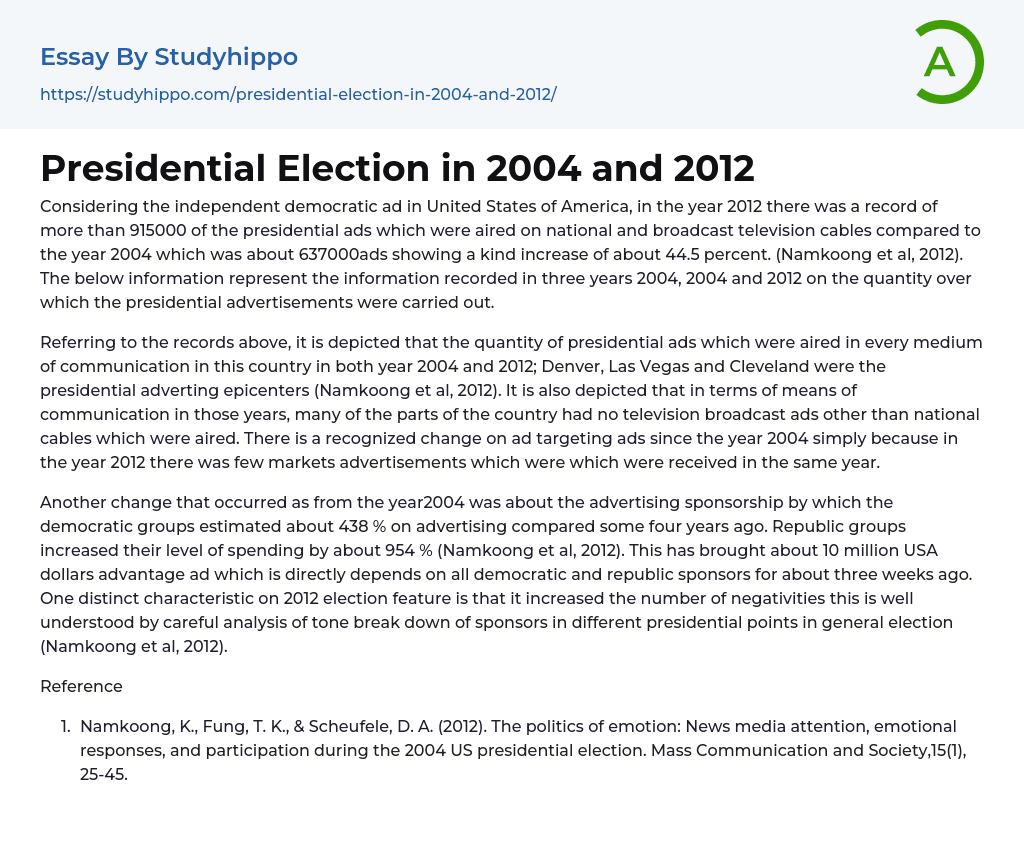Considering the independent democratic ad in United States of America, in the year 2012 there was a record of more than 915000 of the presidential ads which were aired on national and broadcast television cables compared to the year 2004 which was about 637000ads showing a kind increase of about 44.5 percent. (Namkoong et al, 2012). The below information represent the information recorded in three years 2004, 2004 and 2012 on the quantity over which the presidential advertisements were carried out.
Referring to the records above, it is depicted that the quantity of presidential ads which were aired in every medium of communication in this country in both year 2004 and 2012; Denver, Las Vegas and Cleveland were the presidential adverting epicenters (Namkoong et al, 2012). It is also depicted that in terms of means of communication i
...n those years, many of the parts of the country had no television broadcast ads other than national cables which were aired. There is a recognized change on ad targeting ads since the year 2004 simply because in the year 2012 there was few markets advertisements which were which were received in the same year.
Another change that occurred as from the year2004 was about the advertising sponsorship by which the democratic groups estimated about 438 % on advertising compared some four years ago. Republic groups increased their level of spending by about 954 % (Namkoong et al, 2012). This has brought about 10 million USA dollars advantage ad which is directly depends on all democratic and republic sponsors for about three weeks ago. One distinct characteristic on 2012 election feature is that it increased the number of negativities thi
is well understood by careful analysis of tone break down of sponsors in different presidential points in general election (Namkoong et al, 2012).
Reference
- Namkoong, K., Fung, T. K., & Scheufele, D. A. (2012). The politics of emotion: News media attention, emotional responses, and participation during the 2004 US presidential election. Mass Communication and Society,15(1), 25-45.




